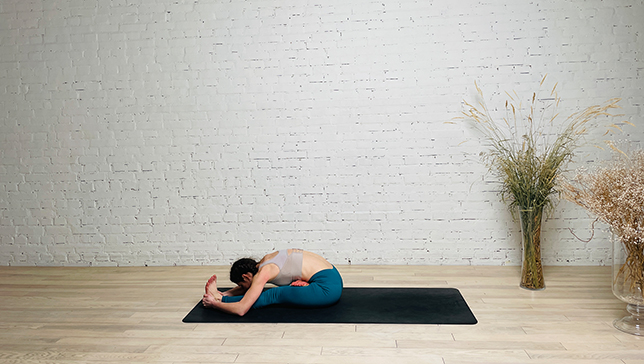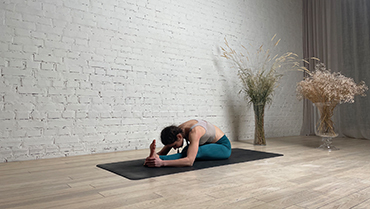Half Bound Lotus Seated Forward Bend - Ardha Baddha Padma Paschimottanasana

Contents
Half Bound Lotus Seated Forward Bend or Ardha Baddha Padma Paschimottanasana in Sanskrit (Ardha’ means ‘Half’, ‘Baddha’ means ‘Bound’, ‘Padma’ is ‘Lotus’, ‘Paschim’ refers to ‘West’ (here, lower back), ‘Uttana’ is ‘Intense stretch’, ‘Asana’ means ‘Pose’), is an intermediate yoga pose that belongs to the forward bends and hip openers and seated categories.
This asana targets glutes & hip flexors, hamstrings, and shoulders, and also involves knees, lower back, middle back/lats, and spine muscles. Half-bound lotus seated forward bend increases circulation to the pelvic region; stretches hamstrings, hips, and shoulders, and also calms the mind, and relieves anxiety.
Pose Detail
- By Type: Flexibility Yoga Poses, Hip Opening Yoga Poses, Shoulder Opening Yoga Poses, Strengthening Yoga Poses
- Body Position: Forward Bend Yoga Poses, Seated Yoga Poses
- Difficulty: Intermediate
- By Benefit: Yoga Poses For Anxiety And Panic Attack, Yoga Poses For Digestion, Yoga Poses For Stress Relief
Step-by-Step Instructions
Benefits and Contraindications
Stretches hamstrings, hips and shoulders
Increases circulation to pelvic region
Calms mind and relieves the anxiety
Stretches the spine
Tones the abdominal organs
Benefits the digestive system
Low back injury
Diarrhea
Asthma
Pregnancy
Photo poses in different angles

Modifications, Props and Tips
To ease the forward bending in half-bound lotus pose, try these props to modify the base pose:
- Yoga block: Place a yoga block under the bent knee to support the foot on the alternate thigh. It adjusts the foot so that the ankle won’t bother you while bending forward.
- Yoga strap: Wrap a strap around the foot after placing it on the thigh. Grab it by bringing the hand from behind rather than holding the foot. It is helpful when you are unable to reach your foot.
Technical Clues
Ardha Baddha Padma Paschimottanasana has two things to work with, a forward bend and a hip opener.
The hips of the straight leg are flexed and the knees point forward, turning the trunk forward. The hip of the bent leg is flexed, abducted and externally rotated, the foot is placed in the Lotus Position (Padmasana), thus opening the hip. If you cannot set foot in the Lotus, use a less difficult position of the bent leg, for example, Janu Sirsasana. One hand reaches behind the back and grasps the big toe of the lotus foot; The other hand grabs the outside of the leg of the straight leg.
It is important to note that you must have length in the internal rotator of the bent-knee hip in order to externally rotate it and place the leg on the thigh. Never force the leg in Padmasana, as you can injure the knee. If you are unfamiliar with this concept, read the article on Lotus Pose. Use comfortable stretching of the internal rotators to remove blockages, so you can finally easily step foot into Padmasana.
Frequently Asked Questions
Variations
- Half Bound Lotus Standing Forward Bend
- Revolved Half Bound Lotus Pose Forward Fold
- Seated Forward Bend